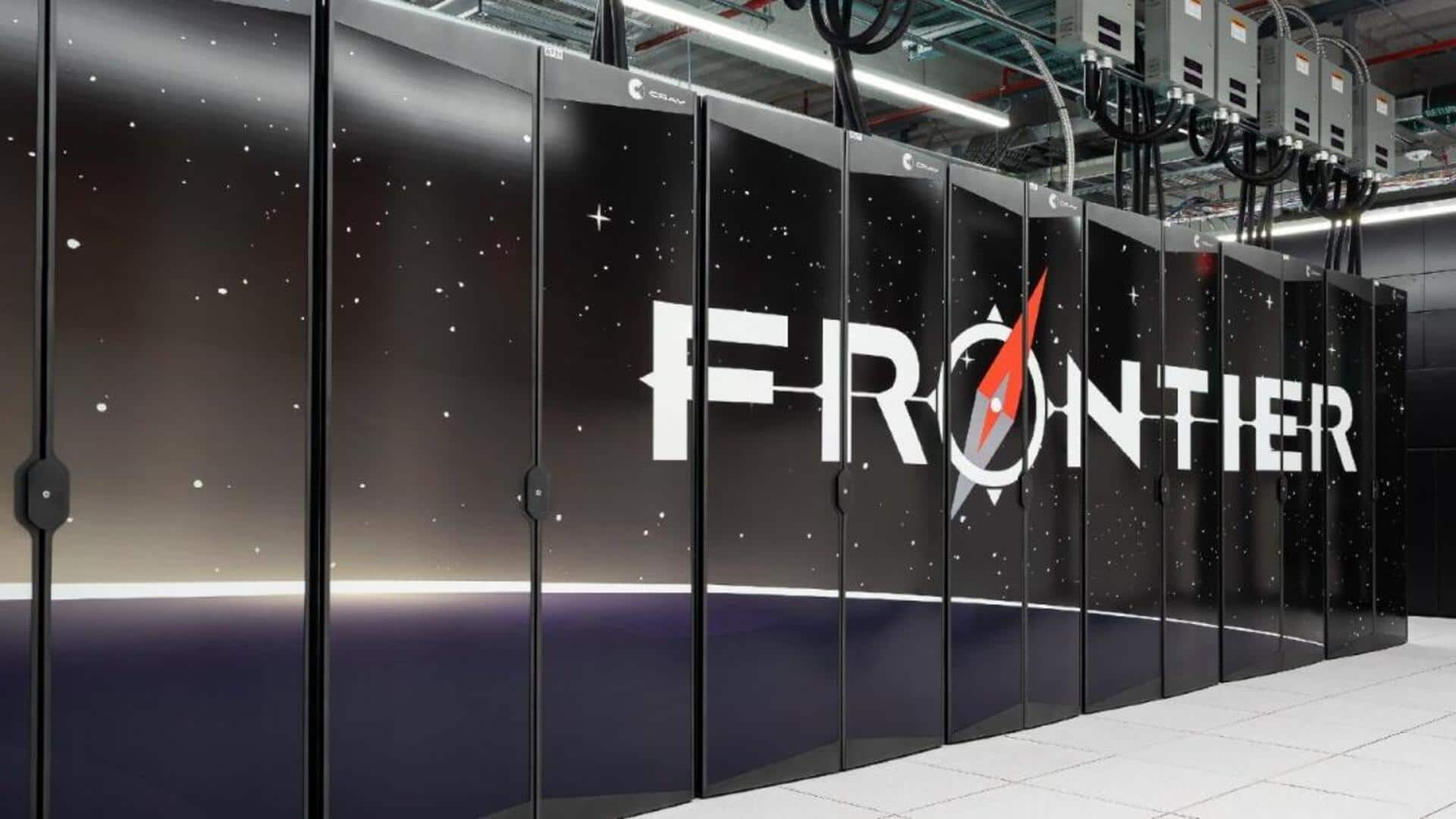
Meet Frontier: The world's fastest supercomputer revolutionizing scientific research
What's the story
Nestled in the hills of eastern Tennessee, US, the world's fastest supercomputer Frontier, is revolutionizing scientific research. Spanning an area larger than two basketball courts and boasting nearly 50,000 processors, this technological marvel operates at a staggering speed that surpasses 100,000 laptops working simultaneously. On a typical day, its power consumption peaks at around 27 megawatts — enough to power approximately 10,000 houses. Frontier is utilized for a variety of research projects, ranging from drug development to engineering.
Debut
Frontier's debut and scientific contributions
Frontier made its debut in 2022, becoming the first supercomputer to surpass the exascale speed barrier. This achievement is equivalent to executing an exaflop or one quintillion (1018) floating point operations per second. Despite its impressive speed and size, Frontier's primary function is not just about raw power but also advancing human knowledge through sophisticated simulations and models.
Applications
Frontier's diverse research applications and global user base
Frontier is utilized for a wide range of research projects, from simulating proteins for drug development to modeling turbulence for improved airplane engine design. It's also used in creating open-source large language models (LLMs) that compete with AI tools from tech giants like Google and OpenAI. In 2023 alone, the supercomputer was accessed by 1,744 users across 18 countries. This year, it's expected to contribute to at least 500 published papers based on computations performed on the machine.
Hardware
A peek inside Frontier's hardware and maintenance
The heart of Frontier is housed in a warehouse-sized room that is filled with 74 identical glossy black racks, that hold a total of 9,408 nodes. Each node packs four graphics processing units (GPUs) and one computer processing unit (CPU). A team of engineers from Hewlett Packard Enterprise, the company that built the supercomputer, constantly monitors and maintains this complex system to ensure its optimal performance.
Speed
Frontier's speed and research proposal evaluation process
Frontier's exceptional speed is primarily due to its extensive use of GPUs, chips originally designed for rendering realistic graphics in computer games, but now driving AI advancements through machine-learning applications. However, gaining access to Frontier for research is not easy. On average, only one in four proposals are approved by the team led by Bronson Messer, the Director of Science at Oak Ridge National Laboratory in Tennessee, where Frontier is located.